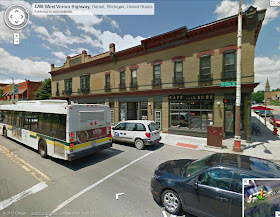Phil McLeod, the former editor-in-chief of The London Free Press and one of those behind The Londoner, is a rather influential fellow in town. When he writes something, a lot of folk listen.
Therefore, it was with some dismay that I read his recent post on turning London, Ontario, into a smart city. It's going to "require visionary leadership," he tells us. I say, "Maybe. But go heavy on the leadership and light on the visionary."
It seems Phil McLeod lives in the Greater Oakridge area of London, an area of mostly traditional suburban housing according to McLeod. He insultingly refers to his area's homes as being snout nose homes.
My narrower definition of snout nose housing excludes many of the Oakridge homes. In Toronto, I've come across whole streets where the line of garages obliterated the lawns and hid the front doors. In some cases, the wide garages built on narrow lots pushed the front doors to the sides of the homes. Those are snout nose homes.
McLeod says about his neighbourhood, "there is also a depressing sameness about the homes." Which causes me to wonder why he even lives in the area. If he isn't a senior, he soon will be. He has enough money to live in an area that he doesn't find depressing. Why does he live in Greater Oakridge?
But, I am wandering away from the point I'd like to make and that is for many years in many places we had what is now known as smart housing. It was common and in many cases it is now gone. Until folk like Phil McLeod understand why, to a great extent, smart housing disappeared, they will not understand how to bring it back.
In a future post, I'll look at why many older smart housing neighbourhoods disappeared. There are a number of clear causes. For now, I'd like to leave you with a picture of some smart housing that is still in use in Detroit, Michigan.
 |
| Still a fine looking residential building. Good materials last a long time. |
 |
| Stores below, apartment above. My aunt in Brantford, ON, lived above a store. |
 |
| Is it good design that has kept some areas of Detroit vibrant? |
London leaders, like Phil McLeod, should forget the futurist jargon. The answers to many of our urban density problems are as near as the not so distant past.

No comments:
Post a Comment